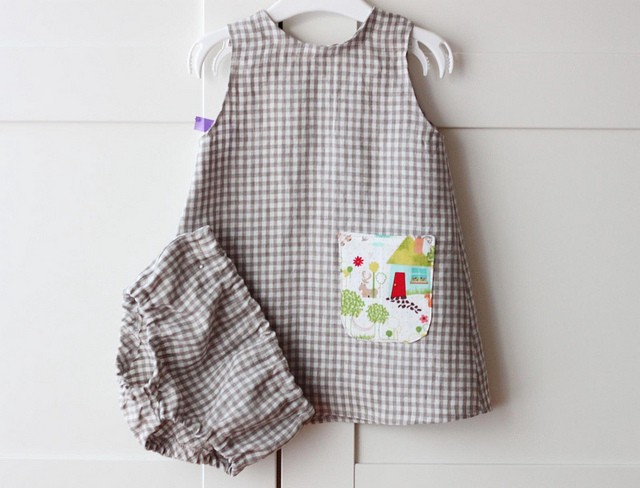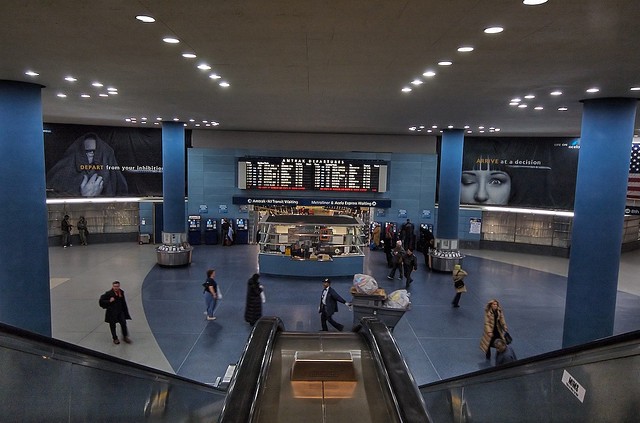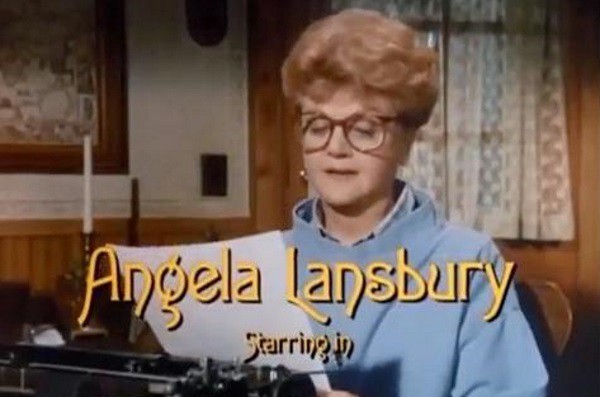New York City, October 6, 2014

★★★★ A hazy shimmer lay over the morning. Off down the avenue, it deepened to dirty brown. Light flared and bounced; backlit green leaves glowed. It was possible to get away with short sleeves, even by the river, though more people had gone to their fall coats. Buttons of sun flashed in the wet dimples on the sidewalk of Prince Street. A long plume of cigarette smoke rose from a woman slowly pushing a two-wheeled cart. By afternoon, the brown had cleaned itself up to a luminous off-white. The three-year-old, damp-haired and bored with the wait through his brother’s swimming lesson, insisted on snapping a photo of the sunlit building across the way.
The Best Thing About New York City in the Fall

The best thing about fall in New York City is that it smells less like piss.
“There’s something about New York City in the fall,” says DNAInfo. “In honor of this change of seasons, we asked New Yorkers to share their favorite things about being in the city this time of year.” Among the answers:
“Crisp air. Turning leaves. Knicks b-ball”
“Thousands of kids.”
“Leaf-peeping at @TheBronxZoo”
“The return of hot drinks and the natural colors of the season!”
These are all nice things, but none of them are as nice as how, in the fall, you smell less piss. I walk the same block most days, between the unmarked rear of a mixed-use building and the front of the Transit Adjudication Bureau. In the spring, this block, like many blocks, begins to smell like piss. In the summer the piss smell intensifies; by the end of the summer it has fermented. It is overwhelming and distinct: the block does not smell like trash, or rot. Only piss. Old piss. Drying piss. Fresh piss.
In the fall, this piss smell breaks noticeably. This is what is special about New York in the fall: The relenting of the piss. The crispness of the non-piss. The olfactory reminder that all that piss and grime are about to commingle into a thin and scentless winter permafrost that you can either ignore or, in the gray slush season, wade through in boots.
Another nice thing about fall in New York is how sunsets, scattering through the dryer-than-usual air — which no longer smells like piss — display a broader range of colors than in the summer. It is quite beautiful.
I Dressed a Girl and I Liked It

When I found out that I was going to have my first child, and then, soon after, that it was going to be a girl, I had few preconceived ideas about parenting or babies. I hadn’t spent much time around babies, and didn’t have very many opinions about how best to raise one. I knew just two things: That, until she could decide for herself, she would not eat animals, and that she wouldn’t be dressed like a “girl” in the traditional sense. That meant pink would be avoided, as would most dresses, hair bows, and all manner of fancy gear which I had spent my entire adult life loathing.
I very quickly learned a truth about parenting: In the early days, when the fetus, and then baby, has no stated preferences and can’t disagree with you, it’s as much about you as it is about the child. And if dressing my baby was all about me, there was going to be plenty of baggage.

I was my mother’s only daughter, the second of four kids. My mother, who was kind and funny and intelligent, wasn’t shy about forcing her preferences onto me. What else can a mother do? The baby won’t dress itself. My mom put just as much effort into dressing me as she did herself. Which is to say, a lot. So, for the first seven or eight years of my life, I didn’t wear pants, as far as I can tell from the photographic evidence. I wore dresses, fancy ones, little white tights and patent leather shoes, my long hair curled and styled daily, seemingly without occasion. As a truly slovenly adult dresser, I’ve often looked at those pictures of my past self and laughed at the irony of it. These days, I’m inclined to be touched: She put so much effort into me, dressing me like a tiny doll.
When I did finally make my pre-teen stand against being a “good dresser,” it was a knockdown, drag out, daily argument over how short my hair could be cut, and how many days in a row I could wear the same t-shirt or jeans and Converse high-tops. My mother and I came to a theoretical impasse about what it means to not only not dress or make up yourself, but to simply not care. To want to wear a uniform day in, day out, and have that uniform be made up of black, gray and white, and to have your only direction to your hair stylist be, “make it so I don’t have to do anything, or fuck with it.” I argued, and still would, (only for myself, no general principles here) that I don’t care because I have better things to do, and spending an hour or whatever on dressing and doing hair and makeup, not to mention shopping (which I hate) is simply too much brain effort for me. I just don’t care. I shower daily, I put in about ten minutes of effort, I dress myself in clean and cared for clothing, and then I move on. Done with that!
Eventually, along with my personal preferences for dressing like a “teenage boy” (my mother’s words) I tacked a feminist veneer onto my hatred for high heels, makeup, dresses, panty hose, and uncomfortable undergarments. Of course women have all the worst, most painful and most time-consuming gear, because men are terrible and they were in charge for so long they got to largely call the shots in matters of dress. This is true; it’s complicated, but it’s still true. Again, I didn’t form broad opinions to be applied to other women who cared more than I did. I simply didn’t care for myself. I am capable of making an effort and even of wearing insane shoes for a wedding or whatever; I just think I look better the other way. I don’t think of it as dressing “like a boy,” though I have been called “sir” more than once. I think of it as…dressing.

So when I realized I would be mother to a daughter, I told myself, “I will not force anything on her when she is capable of making her own decisions. She can wear whatever she wants, so long as the patterns don’t clash.” (I’m not insane). Until then, I decided, she would be “neutral,” whatever that means.
Before she was even born, however, a few cracks began to show. I bought a little red and blue plaid dress. I looked at it for days before realizing it should have some little white tights to go with it. Then some patent leather crib shoes. She never wore it — she was lucky to even wear a patterned onesie before she was three months old because dressing her seemed so complicated — but I knew in my heart that it meant something, something I couldn’t place and didn’t have time to think about. My brain told me this should be a struggle: I should feel confusion or guilt that I, a person who keeps a blog of women who only wear pants, would want to dress my little girl child in the most adorable, girlish clothing I could find. But it wasn’t a struggle and I didn’t feel confused or guilty.
Around three or four months old, babies get incredibly fun to dress, and this age milestone happened to coincide with the end of a truly dreadful winter. The air and the earth started warming up, and it was wonderful. I suddenly discovered the true and absolute joy of dressing and shopping, something I’ve literally never experienced. Every shopping expedition for myself is a nightmare, a bore, a dreadful thing to be gotten through as quickly as possible to get to the margarita or lunch or ice cream cone on the other end. Not so when shopping for my baby. I have come to enjoy the experience of…planning outfits. I think about patterns and colors and accessories. I think about what basic pieces she needs to have to mix and match with different jackets, socks, and sweaters. It is time consuming in the best way. I feel like finally I understand why so many people enjoy this whole “clothing a body” thing.
I enjoy buying dresses, and she enjoys wearing them, her fat little legs freer to kick around than in pants. Rompers one would probably never think to put a boy into I snap onto her happily. I also shop in the boys section with abandon, because it turns out that my baby looks spectacular in absolutely everything. What a beautiful baby, whether naked, in a ball gown or a little pair of khakis and an Oxford shirt. Some pink has even slipped in here and there, and dammit if she doesn’t look great in it.

What does it mean to dress a baby “like a girl”? I found very quickly that if your daughter is dressed in anything other than pink or a dress, if she lacks any “sign” that she is in fact, a female, people will often — almost always — assume she is a boy. “He’s so cute!” reads a comment on Instagram of my (heavily documented) daughter in her black Misfits onesie. “Oh he’s a big boy!” a sweet old lady told us as we waited at the Delta terminal in JFK, pinching my daughter’s red pajamaed legs. (The pajamas had cars on them.) The default position, I have found, is that a baby is male, unless something is added to show that they’re not. What a weird thing, and how unconsciously and fully we have unknowingly embraced it, an assumption which, in adulthood might offend or sting or cause awkwardness. But in babies, it’s okay, it’s cute, “it’s fine!” They’re breathtaking androgynous beings, and only the cues we add to them will easily differentiate them into gendered categories.
A beautiful thing about babies is that they’re just babies. I don’t think any new parent can really take offense at these tiny cases of mistaken assumptions of gender, and I certainly don’t even bother correcting people most of the time. Babies are babies. They don’t carry any innate signals about what their gender is or will be, and they’re not even cognizant of the fact that they probably will one day. But it is an interesting fact of our culture that we depend on well worn cues to give us the answer to, “Is she a boy or a girl?”
My eight-month-old daughter, I see now, has the whole rainbow of options available to her: She can wear black, or red, or baby blue or pink. Sometimes, it means that people will think she is something she is not. I’ve made the same mistake myself with other peoples’ babies, though it’s funny how rare it is to see the mistake made in the opposite direction. I’ve never thought a boy was a girl (though in his Christening photo my father is definitely wearing a dress).
It would go something like this: I see a baby in a beautiful green dress with bow at the back. “Your daughter is just lovely!” I croon, because now, as a mother, I love all babies like they’re well-baked delicious cakes. “Actually, he’s a boy. This is Ethan.” “Oh, I’m sorry about that! Ha, babies. They all look the same.” And it would be fine.
The lesson I learned from my mother in matters of dress is not to fight. If she is like me, Zelda will continue to be occasionally mistaken for a boy well into her teens. If she is not, I will happily help her braid her hair and shop all weekend long for fancy things I would never purchase for myself. And it will be fine, and she will be stunning. Because, unlike my mother, I won’t think that how she dresses herself (when she finally does have a say) will speak volumes about her character, work ethic, or self-respect. I’ll know that it’s just one tiny piece of her, and one which doesn’t matter very much unless she wants it to. But, I’ve also learned that, like my mother, until she does have a say one way or the other, she looks fabulous in dresses. Even the occasional pink one.
THE PARENT RAP is an endearing new column about the fucked up and cruel world of parenting.
Laura June is a writer and a very cool mom. She is also the author of “A Heartbreaking Work of Staggering Genius.”
Photo by arch.190
The Rise of Fake Good Cocktails

New York City’s restaurants are in the midst of an epidemic of not-goodness. Sit down in any new dining room, and you are handed a cocktail list. Each drink on this document will have one ingredient you have heard of and seven that were apparently named after distant planets. Sometimes you may think you recognize a cocktail that you like (a good cocktail, in other words), but everything you like about it has been replaced by some other thing that you’re not sure about. “Hello there, that sounds like an old-fashioned!” you think. “But with burdock syrup instead of sugar, Croatian absinthe instead of bourbon, and hemlock bitters instead of Angostura.” If curiosity gets the upper hand and you ask for one, you will wonder why you couldn’t have had an old-fashioned old-fashioned.
New York Times restaurant critic Pete Wells laments the rise of fake good cocktails. While he focusses mainly on their burgeoning presence in restaurants, they are becoming a true epidemic, having also crept into a number of lesser bars, looking to ring up the higher drink prices previously commanded by superior establishments. Like the rise of fake good coffee, places that pour fake good cocktails rely heavily on a handful of once-useful visual signifiers, forged by the actually good cocktail joints, in order to convey their supposed quality: “ingredients [that] appear to have the right pedigree,” as Wells put it; concoctions which appear in or allude to the spirit of pre-Prohibition or tiki or some other favored era of fancy bartenders; rows of bitters; beautiful barware; whimsical cocktail names; a bartender’s choice option; and the coup de grâce, suspenders.
Unfortunately for the average drinker, when a mediocre bar or restaurant cocktail program puts on its camouflage carefully, the only way to discern whether the cocktails on the menu are good, or merely fake good, is to try one — or rely on the internet, which is just as useless as looking at the bottles lining the back of the artfully constructed bar. (If a bar has recently opened and it’s STILL pushing the speakeasy or pre-Prohibition thing, however, RUN DON’T WALK to the nearest actual bar.) Of course, you could always just order a whiskey, neat. Or a negroni.
Photo of what may be a perfectly potable cocktail by Sam Howzit
Elle Varner, "Fuck It All"
Via The Fader, a song for slumping in your office seat or belting in your car. (See previously: “Refill.”)
Provocations of a Bad Jingle Writer
by David Safran

It’s Thursday afternoon in late August. I am recording a dismal power-metal jingle for CBS Sports and the NFL. Football: a sport that should have died 65 million years ago. To record this jingle, I am using my iPhone’s GarageBand app. This isn’t composing; this is clicking. I am assembling a loop of sludgy, charmless instrumental samples. “Dark and Heavy Riff 06.” “Indie Rock Riffing 02.” “Double Punk Drumset 01.” I am 30 years old, and a songwriter. A singer-songwriter. Multi-hyphenate. But since my music is virtually unknown outside a narrow circle of Chicagoans and South American women, and since there’s about five thousand dollars left in the entire music industry, I’m also a composer for advertising.
I freelance for three agencies. Every week or so, I get an email from a music supervisor. It will start with: “we have been tapped to find the just-right song” or “we have a new spot that needs some rad music.” It will end with: “we need this in two days.” There will be a brief description of the commercial or, if I’m lucky, an attached script. Sometimes the client or advertising agency will be named. Occasionally the client will be ambiguous. A “big box retailer.” An “automotive company.” In the early stages of an advertising campaign, either the brand, the ad agency, or, more often, the director will become eye-wateringly fixated on a pop song. This song will be used temporarily while filming. However, usually for budgetary or ego reasons, it will be unlicensable. So, a knockoff version is requested. That’s when a music agency is contacted, and I receive an email. I’m often told the music should be “almost exact to the references.” At best, this is a creative process lacking creativity. At worst, it’s plagiarism.
I’m not always asked to steal melodies from contemporary songs. Sometimes a music supervisor will indicate light creative freedom. It’s like finding a few inches of space in a feedlot. In these rare moments, the music brief will say: “looking for songs that are heartwarming in a folk/pop way” or “looking for something upbeat and happy.” Empty descriptions. Once these original, or orginalish, songs are submitted, the client will request changes. “Good start, but we dig this new Black Keys song. Can we get something almost similar to that?” For Redd’s Apple Ale, I submitted several songs from my own record, Delicate Parts. My lyrics were “too challenging.” The client also wanted the word “Red” in the lyrical hook. So my words and voice–everything essential and human and exclamatory–were removed from the mix. Throwaway lines jammed with “red” were dashed off. The songs were edited into 30-second clips and a female singer recorded over them. My music became part karaoke, part evisceration. And I permitted it.
How did this happen? How did I become a jingle man?

In 2012, I self-released a single called “Woman Astride, Facing Away.” It was almost a sleeper-hit. Almost. But not quite. Instead, it was a breakthrough song for maybe two or three weeks. I occasionally still hear it. Recently, on the Brown Line, a teenaged girl near me was listening — loudly–to “Woman Astride.” I got her attention. She unstuffed an earbud. I mentioned I wrote the song she was playing. She corrected me: “Huh? This is Company of Thieves.”
But those few weeks of breakthroughing allowed me some maneuverability in the music business. To find some life in a plague pit. As a result, Delicate Parts was shopped around for a record label. I stopped counting after 35 labels rejected it. The stated cause for rejection had nothing to do with my music. I was told repeatedly: “We don’t sign any singer-songwriters, just full bands.” Rejection of a very high order. Ready for any type of rediscovery, I moved quickly through New York and Los Angeles to dialogue with licensing companies. Overall, I met with 17 of them. Every licensing company discussed the “commercial appeal” of my album, and then rejected it.
No record label. No licensing company. Yet I had a small, passionate following–an “expanding audience” to use biz-speak–and tickets were selling to my Chicago shows. I began meeting with several booking agencies. All turned me down. One agency, Windish, vetted and rejected me twice. Windishly fitting. Finally, I signed with a “boutique” booking agency headquartered in Chicago. My agent enthusiastically said it would take four months to schedule a national tour. He suggested I hold off getting my wisdom teeth removed lest recovery time took longer than expected. Seven weeks later, my agent dropped me. “I have to release you from the roster. I thought it would be easier to book you.” That was all he said.
Determined to be heard, I began asking various music friends, the ones more accomplished in their careers, about international agencies. I was introduced to PapaMusic, located in Buenos Aires. Papa’s co-owner heard my album and was eager to have a phone chat. I assumed we would discuss licensing my songs. But what he really wanted was my voice. One of the agency’s projects was an Adidas campaign. The commercial’s temp track was Jarvis Cocker’s “Black Magic”–a song that sampled from “Crimson and Clover.” Adidas couldn’t get “Black Magic.” PapaMusic was hired to write a similar song. To reiterate: Jarvis Cocker very deliberately borrowed another tune’s chords for his own composition. Now advertisers wanted a blatant imitation of a blatant imitation–to sell shoes. The lyrics were in English, but English as written by a team of advertising people from Argentina. It was lyrical dandelion fluff.
International viral ads, I was told, favor American accents. For this campaign, they specifically wanted a Jarvis Cockerish voice but a bit deeper and with more Yank. PapaMusic thought mine was right for it and asked if I would sing. A job I both reluctantly and gladly accepted. I recorded my vocal part in Chicago. I was thanked and paid. Then nothing happened until the Adidas ad appeared on YouTube and linked on my official Facebook page. The ad, and the story behind it, began to draw attention. Within a few days, I started getting requests for interviews. It took me singing brand-focused filler lyrics–lyrics written by Argentines half-fluent in English–to be considered a Serious American Songwriter.
When you have been pretty well ignored for a decade; when you have been repeatedly called “difficult” and your music described, or dismissed, as “unclassifiable”; when your two greatest commercial achievements are a novelty duet with a shrewd pop vocalist and a voiceover in a shoe commercial on YouTube, getting a burst of publicity is exhilarating for a second. And then, abruptly, you feel old and regional–like, say, a cast iron pissoir or Mars’ Cheese Castle.
Still, I did interviews with morning news programs and “luxury lifestyle” magazines. I re-submitted my album, along with the Adidas link, to a few labels that had rejected me. This time, there was more interest. The president of a top music publishing company made an offer to rep my catalog and then, upon learning I didn’t write the Adidas song, rescinded that offer a day later. I did my professional duty as a 21st-century artist and played a showcase for an advertising agency. I sang my tunes about aging and failure and personal relationships while pretending I wasn’t standing against a giant Corona backdrop. It was late afternoon in an office building. The audience was the agency’s creative department. Good clothes and low empathy all around. This wasn’t a show; this was a daytime company meeting.
Since brands and advertising are bankrolling the music industry, bands will agree to a showcase hoping to slap our hot tracks on a commercial. Any one will do. The agencies, in return, get a photo-op, a free show, and, I was told, “cranium stimulation.” My showcase must not have stimulated skulls because, after the performance, the agency’s executive producer suggested we get drinks later in the week. He never showed up.
The buzz diminished after a few months. I was not lifted out of obscurity. But, from the Adidas spot, I started freelancing for a music agency. Again, I wasn’t licensing my own songs, just composing ad music. In April, a year after Adidas, PapaMusic unexpectedly emailed me. They were working on a Coca-Cola commercial — a campaign targeted all over the UK–and asked me to sing their lyrics.
Soon after my April voiceover, I let slip I had just recorded Coke vocals. I told this to a few record labels and that cranium-stimulating ad agency. Everyone agreed the Coke spot would boost my profile. More disturbingly, each label said they would sign me. But first they wanted to view the TV ad. The advertising agency wanted to schedule a meeting, a real one, to discuss which projects could use my songs. But they too wanted to see the commercial.
For six weeks, my entire music career was riding on a soft drink. The value and uniqueness and durability of my music: all secondary to whether I sang gibberish in a Coke commercial.
I assumed PapaMusic’s deal was secure. It wasn’t. They were just pitching. In mid-May, Papa informed me that Coke went with another song. And, accordingly, the labels rejected my album again. The ad agency never scheduled that meeting. Since losing Coke, I remain a public songwriter nowhere to be seen, freelancing for additional music agencies — sloppily clicking away at weekly jingles on my iPhone.

When I was 18 years old and beginning to take songwriting seriously, I went looking for a mentor. I discovered a musician who lived nearby and had a lengthy career writing songs for celebrities and jingles for advertising. I’ll call him “T.” He’s still local: I just spotted him eating alone in Evanston, haute-dining on subs and cigs at Jimmy John’s. (Or, if you are a local celebrity, “The James John’s.”) T was about my father’s age. He seemed approachable and, in the press, encouraging of younger players. I found T’s number and phoned him in the middle of the day. He answered. I gave my name. I asked if he would listen to my demo. Without any small-talk or screening, he invited me over. I got in the car and drove down Sheridan Road through the North Shore.
T’s house was utterly empty, except for a basement recording studio and a shrine to Bob Dylan. He handed me an acoustic guitar and insisted I play something. I strummed. I sang. I did my best to perform. T seemed bored and blank. I asked what he thought of my music. He said I should play more guitar riffs. He then asked if I wanted to hear one of his songs. Before I could answer, he put a CD into his sprawling recording equipment and started blasting a fully produced track. He closed his eyes. He swayed proudly to his music. “I wrote this one for Mavis!” he shouted over the song. When it was over, he put a second CD into the machine and cranked another T original. He resumed his davening. Midway through, he shouted: “I wrote this one for Annie Lennox!” This went on for 45 minutes.
As I left his grand, empty home, without a mentor but with a new neurosis about my guitar playing, I looked at this lonely, aging, jingley songwriter and thought about a passage from The Wind in the Willows in which the vigorously haughty Mr. Toad, a kind of amphibian Felix Dennis, triumphantly sings to an “enraptured audience that his imagination so clearly saw.” Earlier, Toad had been blocked from singing in public — “a sort of turning-point in [his] career.” And so, alone in his Toad Hall bedroom, Toad performs his “last little song” in front of empty chairs. He sings this twice, “letting himself go, with uplifted voice.” Then he breaks down a bit, “heav[ing] a deep sigh; a long, long, long sigh.” But arrogance and vanity always win: Mr. Toad snaps out of his meltdown and fixes his hair.
For twelve years I associated this scene with T. But I’m a 30-year-old songwriter. My audience is enraptured and imaginary. And I am alone in the afternoon somewhere on the North Shore recording a football jingle.
I will heave a deep sigh; a long, long, long sigh. And then I will fix my hair.
Aberdeen and Churchville, Maryland, to New York City, October 5, 2014

★★★★ The cornfields were tall walls of brown, showing traces of pale green in their upper parts. Purple leaves sifted down over the choir where they sat in their vestments on folding chairs; the candle flames flicked back and forth and their glass enclosures swung in the breeze. But still insects were singing somewhere nearby, and red salvia bloomed in the bed along the church, even as the tops of the maples had gone flame-orange and yellow. The impression of stillness held, despite constant activity — the leaves flurrying, swifts or swallows fluttering overhead, light planes buzzing through the clear blue. A big, silent vulture glided right overhead. One of the dogs in the congregation growled under the Prayer of St. Francis. A hermit crab was brought up for blessing, its cage wrapped in a towel against the chill. Gusts kept coming, till the fluttering scriptures and collection made an early and hasty recessional for the shelter of the church proper. The sun on the early accumulated leaves cast a warm glow before the door of the parish hall. A red-shouldered hawk studied the field from a wooden utility pole across the road. Off the edge of the parking lot, the ground was strewn with red apples, and more still hung in the old apple tree. The interstate was open and clear. From the Delaware Memorial Bridge, the view stretched to the tiny Philadelphia skyline clustered in the distance. Fields by the Turnpike were rich yellow in the low sun. The rising gibbous moon was ghostly from New Jersey, but by the Manhattan evening it was sharp and bright.
A Walking Tour Through the Living Wreckage of Penn Station
A Walking Tour Through the Living Wreckage of Penn Station

Nearly everyone can agree that Penn Station, America’s busiest transit hub, which routinely takes in and spits out some five thousand humans every minute, is terrible in nearly every conceivable way. On a Wednesday in late March, David Lewis, a professor of cocnstructed environments at Parsons, and a partner at the architecture firm LTL (he’s one of the L’s), agreed to walk with me through Penn Station during rush-hour to show me not just how broken it was, but how it had become that way.
I was standing by the entrance on Penn’s southwest corner, at 31st Street and 8th Avenue, watching roadies haul equipment out of a semi-truck for a show that night, when Lewis walked up and introduced himself. “That’s part of your problem right there,” he said, pointing his finger at the semi, then up slightly toward at Madison Square Garden. “Getting as many people into a train station with a massive, twenty-thousand-seat multi-use performance space on top — it’s insane.”
In 1910, when the station first opened, there was a roof that soared fifteen stories above the tracks, and big, multi-story windows which let in oceans of sunlight. The roof and the windows came down in 1963, and now, five stories up from the tracks, which are three stories underground, there’s Madison Square Garden, which opened in its current form in 1968. The compressed space and complete lack of natural light make it hard to sense time; this is crucial to understanding its dysfunction, said Lewis, because a station, “any station, but no station more than a train station, is like a clock.” He corrected himself, “is a clock.”
As we descended into the first floor of Penn, in the Amtrak area, travelers brushed past. Lewis paused a moment. “The whole place is a corridor,” he said. “Why would you need high ceilings in a corridor?” he asked. I didn’t know, so he answered his own question. “This is the contradiction in the basic premise of the train station: Is it a point of destination where you want to come gather and hang out? Are you moving through to get out, or get in? Penn Station made the call, intentionally, that the spectacle was no longer financially viable. And, more importantly, you can get people in and out really efficiently.” People were moving, that’s for sure. We entered the stream of commuters marching toward Amtrak’s big boards and down to the platforms below. We passed a row of trashcans, above which hung photographs of the old station. In one, among the most iconic images of old Penn, light streamed in from high, holy-looking windows. Tiny travelers stood upon a marble floor, far below the rays of light. “No other train station in the world has photographs all over of the building they tore down!” Lewis said.

We walked north through the Amtrak waiting hall, past the passengers packed together by the boards, waiting for their train to be called. Then we entered an oblong almost-atrium. We faced north. To our left stood a sleek, glass and steel information booth. Hanging from its kiosk was a closed sign. The rest of the space was all but empty, too. “OK, we’re here,” said Lewis, “the center of the station.” He gestured east, toward a wide staircase to our right, descending from the street level. This, he said, used to be a carport, but it’s been closed to traffic for more than a decade. While I was looking at the staircase, Lewis pointed out that behind it was a long hallway that lead to Penn’s main entrance on Seventh Ave. I knew this corridor — it’s Penn’s main artery, and we were standing in what was meant to be a big finish, an opening at the end, a light at the terminus of a long and crowded tunnel. Only, you couldn’t see the hallway from here, and you couldn’t see the almost-atrium from the hallway, because the stairs blocked the view. A stairway to an unused carport made no sense today, but when the new Penn went up, a carport leading directly into the center of the station made all the sense in the world. It reminded me of something Stewart Brand wrote in his book, How Buildings Learn: “When we deal with buildings we deal with decisions taken long ago for remote reasons.”
The staircase wasn’t even the biggest problem here. “This was supposed to be your classic waiting room,” Lewis said, “But there’s no seating, and, where the hell are the trains?” I scanned the room. There wasn’t a lot of signage — mostly advertisements for Amtrak. And there was no direct passage to the tracks below. So the trains, once you could determine where they might be, were through another room — or, more accurately, three rooms: one for Amtrak, the station’s owner, another for New Jersey Transit, on the other side of the station, and one more, a floor below us, for the Long Island Railroad. Each waiting room for each rail line had an entirely different design — and even differently designed signage to get there. Ticketing, like the signage, is unique to each railway. A year ago, the former spokesman and operations planner for New York City transit wrote in the Times that the problem with Penn “is that territorial claims within the station run deep.”

This space had fallen victim to such claims, Lewis said. Penn Station had become “leftover.” It was “an empty center.” For some, this works. “It privileges those in the know,” was how Lewis put it. Surely this puts Penn in the running to be the most New Yorkish structure in all of New York. When you need to get Amtrak tickets, this is where you go, because no one is here, “and the people that are usually have no idea what they’re doing.” Lewis started toward the stairs, turning past and entering the main hall. Suddenly, we encountered a torrent of commuters, marching past the shops lining each side of the passage and off toward their tracks. We stood to one end, across from the Krispy Kreme. Lewis pointed out that nearly everything for sale was pushed way up to the front of each store — that’s where all the action was, and where all the customers were, moving, marching by. Some of the most successful businesses here, Lewis said, sell buckets of the same high-volume, low-cost, big-markup product iced down in barrels right out front: “Beer.” Then he added: “For the train ride ahead.” Almost no one lingers.

The problems facing Penn’s retail space are central to the station’s future, and the push to rebuild it. The Penn Station “submarket” (the ten-block area in and around Penn, from Tenth Avenue to the west, and Broadway to the east) has the lowest rental rates in Midtown Manhattan, according to a 2013 report by Cushman & Wakefield. Organizations calling to redevelop Penn, and its surroundings, have latched onto this fact, with an eye toward the transformation of Hudson Yards, the largest private real estate development in U.S. history. Last year, the Municipal Art Society of New York issued a big, splashy report titled “Unlocking Penn’s Potential,” which calls for a redevelopment of the neighborhood, citing economic opportunities of rezoning for larger public spaces and improved commercial, retail, and mixed use buildings. In the report, an image produced by the illustrious architecture firm Diller Scofidio + Renfro depicts a handsome trio dining fancily — their table looking out over several gleaming walkways, a sweeping central atrium, and a swimming pool. The caption is everything: “A new Penn Station could provide new high-end retail and dining opportunities, much like Grand Central.” The average rent in the Grand Central submarket is about twelve percent higher than Penn.
Money for a train station — even for the upkeep of an old, awful station, but especially the construction of a gleaming new one — normally comes from either ticket prices, which hit commuters, or from higher-end stores with increased rents, which hits commuters, sure, but mainly tourists. There is a third way, of course, and it’s sitting right on top of Penn. Madison Square Garden’s existence was not, Lewis said, the result of “some evil empire. The future of the train was in question. Other cities were bulldozing their stations. Something had to be done to generate enough money to keep Penn afloat.” That something was Madison Square Garden.
Today, Lewis continued, “in a bizarre conflation of nostalgia and futurism, we want our stations to harken back to the golden age of public transportation on fiscal budgets that don’t necessarily allow it.” The thing about these huge central atriums that Penn had and Grand Central has, though, is that while they are grand, they are also awkward, as in not efficient. “I would argue that Penn Station works extraordinarily well,” Lewis said. Better, in many ways, than Grand Central, where the main concourse is clogged with tourists taking pictures, interrupting the flow. Andrew Gelman, the director of the Applied Statistics Center at Columbia, argued much the same in a post on his personal blog, “In Praise of Penn Station”:
It’s easy to get around, there are lots of shortcuts, and the train loads fast–some people come down the escalators and elevators from the top level, others take the stairs from the middle level…[M]y guess is that the new Penn Station will be a lot more like an airport. Bright and airy, some top-end stores, it would look beautiful if it weren’t filled with thousands of people [some 750,000 each day] trying to get on and off the train in rush hour.
Lewis also wanted to show me how well Penn can work, so I followed him back to the Amtrak hall, then down a level, to a floor just above the tracks. “This is where you want to be!” he yelled over a very loud hum and strong breeze. We were standing in front of a large ventilation system, looking at small computer screens displaying the train schedules and track numbers. Around us were some business men and women with expensive commuter bags, looking bored. Lewis was saying something about Penn’s efficiencies, but it was tough to make out exactly what, over the noise. In Grand Central or Union Station in D.C., he shouted, there are many different thresholds to cross, grand halls to navigate, awestruck tourists to dodge, before one gets to the exact point of entry to the train. Not so at Penn. “Here you just slip in,” he said. “What?” I yelled. “YOU JUST SLIP IN!” he said. “The blowing is kind of annoying but that’s how you get air.”
As Lewis and I reemerged from the lower level, I pointed to Amtrak’s enclosed waiting area, one of the only places in Penn with a lot of seats. “I don’t even know what those people are doing in there,” Lewis said, and added that the sitting room was another example of the core problem facing a station, or really any public space that doubles as a transit hub. The people who use it the most, the commuters, wish to spend as little time there as possible; Penn is already mostly fine for them. It was rush hour now, and the commuters came streaming in, bunching around the big boards while others, the pros, ducked down into the loud and grimy platform below, closer to the tracks and eventual escape. Penn’s re-imaginings were for tourists; commuters just wanted to get home. Lewis grinned while he watched the efficiency of the space. Then we walked back up the stairs and stepped out into the glimmer and glow of the evening light.
Ryan Bradley is a writer and editor with a brand new electric car in a sunny land of children.
Photos by Peter Dutton, Andy Cross, and Peter Dutton
Watching Every Episode of 'Murder She Wrote'
by Matthew J.X. Malady

People drop things on the Internet and run all the time. So we have to ask. In this edition, Whisper head of news Slade Sohmer tells us more about the things you might discover by watching every single episode of ‘Murder, She Wrote.’
Just finished Murder, She Wrote. No, the whole series.
— @slade
Slade! So what happened here?
Most people my age have that vague memory of watching ‘Murder, She Wrote’ in their grandparents’ house. At the time I viewed it as no more than CBS For Us By Us Old People Fodder. But a few years ago we were looking for a show to get into — crime-solving for me, something classic for my boyfriend — and we met in the middle when Netflix suggested M-S-Dubs. We tried the pilot and were hooked instantly. The murders keep you guessing. The plot twists are legit. Dame Angela Lansbury’s acting is worthy of her twelve Emmy nominations in twelve seasons and four Golden Globe wins. And in the memetic era we’re in now, drenched in our lust for irony and an inside joke, it was immediately refreshing to remember what unabashed sincerity and earnestness looked like. It’s neither snark nor smarm; it’s schmaltz, but the best kind. Don’t sleep on a cozy mystery drama.
The murders themselves are just serialized rewards, though. The show is a broader case study in Jessica Fletcher Gives Zero Fucks. She’s kind and sweet and polite, with a most neighborly etiquette. But she’s also a ruthless advocate for justice, fearless in the face of intimidation and incapable of buying your weak bullshit. When the killer says “I was at a restaurant ’til 9:30,” and she calmly refutes, “No, I don’t think you were, Jerry,” she does it with equal parts elegance and ferocity. She walks down every dark hallway, she opens every locked door, she meets every lying sack of shit with inquisitive charm. And she never judges you.
People always ask me to summarize it: Why do you like this show so much? Remember how J.K. Rowling popped up from obscurity to become an accidental mega-famous author? Now imagine Rowling is in her late fifties, a flawless specimen of folksy charm and social grace, growing ever more famous for her subsequent novels, traveling the country and the globe, personally solving 250+ murders over the next twelve years. And it’s not simply that she solved more than twenty murders *every year* for more than a decade over the objections of misogynist detectives and interference from blundering inspectors — she coaxed full, teary confessions from the murderer in each instance. Wouldn’t you watch that? Doesn’t that sound like someone with whom you’d want to spend your evenings?
Ok, the floor is yours! Make the expanded case for Jessica Fletcher as a feminist TV icon nonpareil. (Also: What was the best ‘Murder, She Wrote’ episode ever and why?)
In the pilot, some stuffy Sunday morning presenter asks Cabot Cove’s finest about the feminist streak in her book’s main character. The newly famous writer scoffs, calling it unintentional, which is probably how Lansbury would’ve handled a similar question about Jessica Fletcher. Both the star and the character doth protest all they want, but there is literally nobody on television lo these last three decades who has drawn a feminist blueprint quite like this.
Jessica Fletcher was a substitute English teacher in a town of 3,560. After losing her darling husband Frank, she finally gives that novel a go — just for herself, almost to pass the time. Her bumbling nephew Grady, unbeknownst to her, forwards it along to a friend, and the rest is history. Almost overnight she goes from Local Citizen to World-Renowned Author, gallivanting around NYC, LA, British Columbia, Rome, Moscow in 1989(!) — name a city, chances are she’s not only been there, she’s foiled a perfect murder.
But that’s just background. Here’s a woman who said, “Yep, now’s the time for me, nobody is standing in my way of happiness or greatness, nobody can tell me to back off a case or run me out of town.” Every single detective falls into one of two binary camps: One, the crotchety male cop who doesn’t need Jessica’s help; or two, the inept local constable who’s in way over his head. Whether the number one is trying to shoo her away or the number two is begging for her help, the end result is the same: a strong, confident icon leading by example, by actions, by deeds, not slogans or words or academic blabber. She’s not equal to men — she exceeds their intellectual capacity, she outfoxes them all at every turn. She doesn’t fight for her rights. She just goes about her way in the world accepting every challenge as if every creature on this earth has all the rights and responsibilities as each other.
With respect to the other part of your question: It’s tough to judge “the best” episode of ‘Murder, She Wrote’. They all have different sentimental reasons for being great. There’s the episode where Jessica plays a floozy in a bar to get information that’s pure lulz. There are amazing cameos, like a mid-twenties George Clooney, Jessica Walter four times, a young Joaquin Phoenix (in his Leaf Phoenix days), and Neil Patrick Harris. Or the virtual reality episode, which gets lots of play on Tech Twitter and featured a pre-Hercules Kevin Sorbo. But here’s one of my favorites to discuss: Season twelve is pretty weak, with the show running out of gas and Lansbury already committing to closing down shop. There’s a blatant ‘Friends’ parody, ripped from the headlines — the murder happens on the set of a fictional sitcom called ‘Buds,’ where all these twenty-somethings hang out at a coffee shop. This episode is amazing on its own, until you realize the added genius of it: CBS moved MSW from its comfortable Sunday slot to Thursday nights for its final season, pitting it against the new NBC darlings. This now seems like an incredible Lansburian middle finger to CBS and to ‘Friends.’ Brava.
Lesson learned (if any)?
You all can keep Beyoncé, Angela Lansbury is the one true queen, king, dame, diva. At eighty-eight years old she just got done doing eight shows a week on the West End in London in Blithe Spirit (of course we sat in the first five rows and waited for her to emerge from the stage door after attending a performance), starring on the very stage where her mother made her own debut. She did her time in Hollywood, killing it in The Manchurian Candidate and Gaslight and The Picture of Dorian Gray. She’s hosted the Tony Awards more than anyone, winning five awards in the process. She had twenty million people tuning into her every Sunday night for a dozen years. And she’s done it all with beauty and charm and humility, bringing something different to every role. I routinely have this daydream that when NPH ties her Tonys hosting record, the opening number will be a spoof involving Doogie’s murder, with A-Lans coming back to the show to solve it. (Hey, it’d beat that Hugh Jackman hopping number from this year!)
Just one more thing.
Everyone makes this big fuss over Betty White, and deservedly so. But Lansbury needs this same treatment. While she is still with us, the world needs to come together and recognize greatness. So go, throw on a ‘Murder, She Wrote’ tonight, watch a little ‘Law & Order’ With a Hint of Jazz Hands, see the world through the eyes of the impressive woman who can teach you everything you need to know about growing old with class. Tell ’em Jessica sent you.
Matthew J.X. Malady is a writer and editor who was in New York but is now in Berkeley.
